‘Where in the world can you go for a hike and find bodies?’: Group searching El Paso Sector’s growing migrant graveyard
Watch ABC-7's special report Lost But Not Forgotten on the video player above.
EL PASO, Texas (KVIA) — It’s a hot day and James Holeman could be relaxing and enjoying retirement — instead, he’s in the middle of the desert searching inside a backpack that could belong to a person who is dead.
"This is a woman's bag,” Holeman said as he pulled out different items from it. “Here is a comb. There's water still in the bag. Underwear. This is a woman's bag.”
Hundreds of backpacks have become part of the desert’s landscape in the area of Santa Teresa, New Mexico. It’s a few miles north of the border wall.
Holeman searches backpacks in the desert because it’s possible migrants left them behind and died nearby. He hopes it has something inside that could help identify their remains.
“There's no ID. You know what happened to her? You know what became of her? I don't know,” Holeman said as he dropped the backpack.
He didn’t find remains in the immediate area, but he continued walking and searching.
Holeman is the founder of the non-profit organization, Battalion Search and Rescue. He leads its volunteers into desert areas next to the border several times a year.
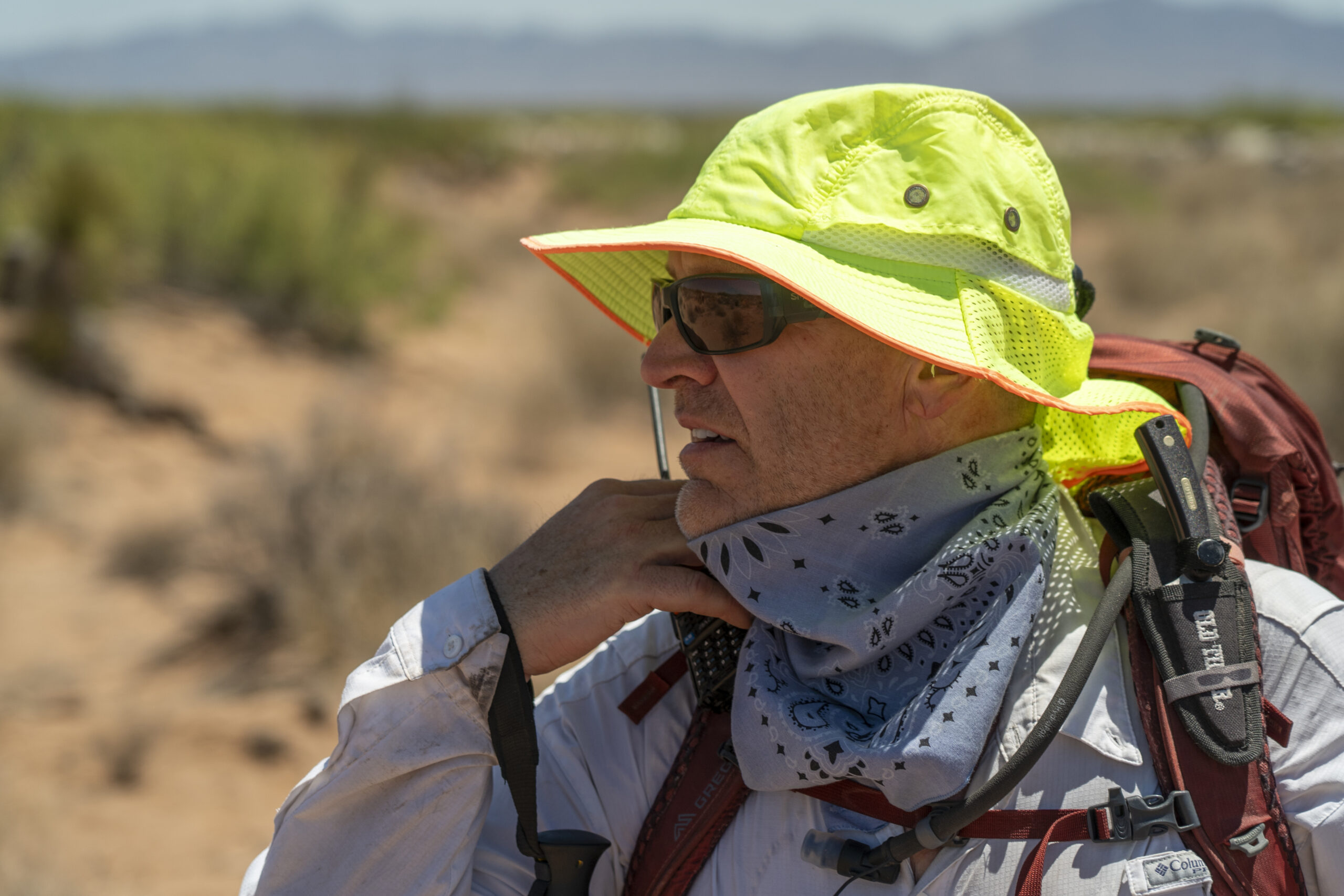
When temperatures are high, the group’s goal is to find migrants who may be suffering because of the heat and may be lost in the desert, but most times it’s too late.
"Our neighbors, our brothers and sisters are dying in our backyard,” Homeland said.
Under the sun, many migrants die. Some migrants are exhausted and malnourished when they reach the U.S.-Mexico border. By that point, some of them have traveled thousands of miles from their home countries in Central and South America. Their trips can take weeks to complete.
Many of them make it past the border wall and into the U.S. Others die in the desert. The Battalion searches for their bodies or bones. The organization hopes to help reunite their remains with their loved ones.
"Like many of our volunteers here, we're just completely shocked. I had no idea,” Holeman said. “Our borderlands, to borrow a phrase from a book about the border, is a land of open graves.”
Searching "the land of open graves"
In May of 2024, Holeman and about a dozen volunteers searched the area of Santa Teresa. It’s in Border Patrol’s El Paso Sector, which includes New Mexico. It’s just a few miles west of the City of El Paso.
ABC-7’s Jesus A. Rodriguez and our contributor Luis Chaparro joined the Battalion on the search.
The group of volunteers who participated in the search were a mix of people who have done this before and people who were doing this for the first time, like us.
Holeman asked all volunteers to dress adequately for a long desert walk. He asked us to wear a long-sleeve shirt, preferably white or light-colored. He asked us to wear nylon hiking pants or something light-colored, like khakis. No blue jeans or dark-colored clothes. He asked everyone to wear high-visibility hats to make us all easy to spot.
“If you think you are going to hike many miles in the open desert with temperatures in the 90s wearing blue jeans, you are lying to yourself and you will quickly become a liability and compromise the good work we are trying to do,” Holeman told us in a message with instructions.
We were also asked to bring plenty of water and snacks.
Before the search, the Battalion distributed walkie talkies to all volunteers to communicate.
The volunteers broke into two search groups.
"These are the two kind of areas that I mapped out for us to work,” Holeman told one of the groups as he pointed to a map on his phone.
The Battalion uses an app to track where they’ve been before. The organization wants to make sure they cover new areas with each search.
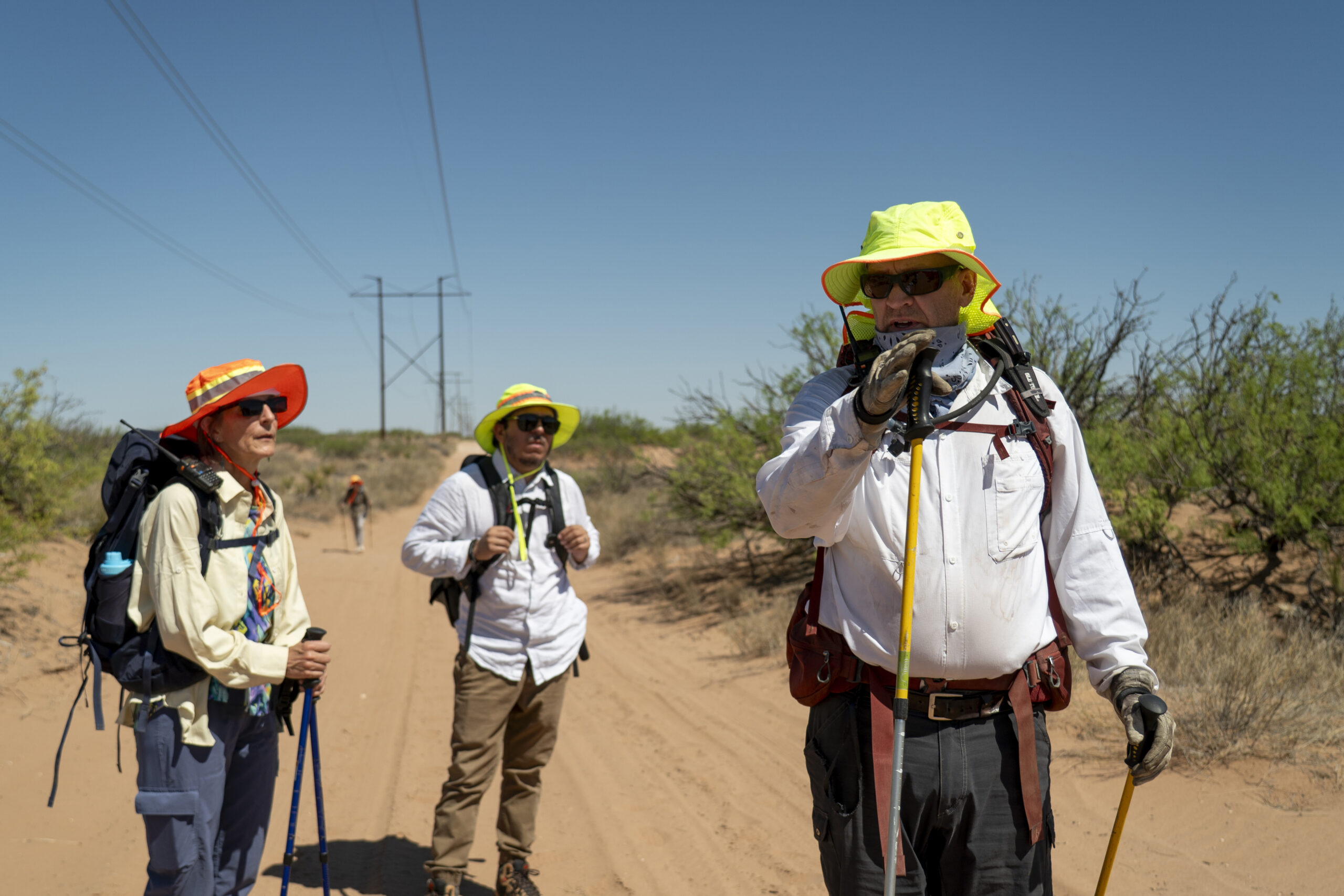
Soon after we started walking, Holeman pointed to tracks on the sand. They were clearly from shoes, big and small. Holeman told us they were likely migrants who crossed there a day or two ago.
Holeman said he used to be in the military. He said he retired a few years ago and was looking for something to keep him busy. He said he found out about an organization in California that does the same thing as the Battalion.
"After hiking with a group from San Diego for three months and witnessing 12 sites in one weekend — how can that not change your life?” Holeman said.
He explained that sites are areas that have human remains that have been there for days, weeks or even years.
"I've witnessed everything from single bone to a complete, you know, person that just passed hours ago,” Holeman said. “The desert kind of strips the humanity away really quickly. Animals are feeding on people in our borderlands."
The Battalion began doing searches in 2018 on the border in Arizona.
Holeman said he has seen about 200 sites since he founded the group.
"I am witness to like a really, a really horrible injustice,” Holeman said.
Holeman lives in Silver City, New Mexico and in Ajo, Arizona, when he's not searching the desert.
A few hours into the search, we felt the consequences of walking in the desert. Sweat dripped off our bodies, the sun began to turn our skin red and our exhaustion increased with each step.
Temperatures were in the mid-90s during the search in late May.
In recent years, the El Paso region has experienced record-breaking heat. We learned quickly that taking breaks during these searches is vital under the sun. We sat under whatever shade we could find several times. We took breaks to drink plenty of water and eat snacks. And even then, the search was difficult for us first-timers.
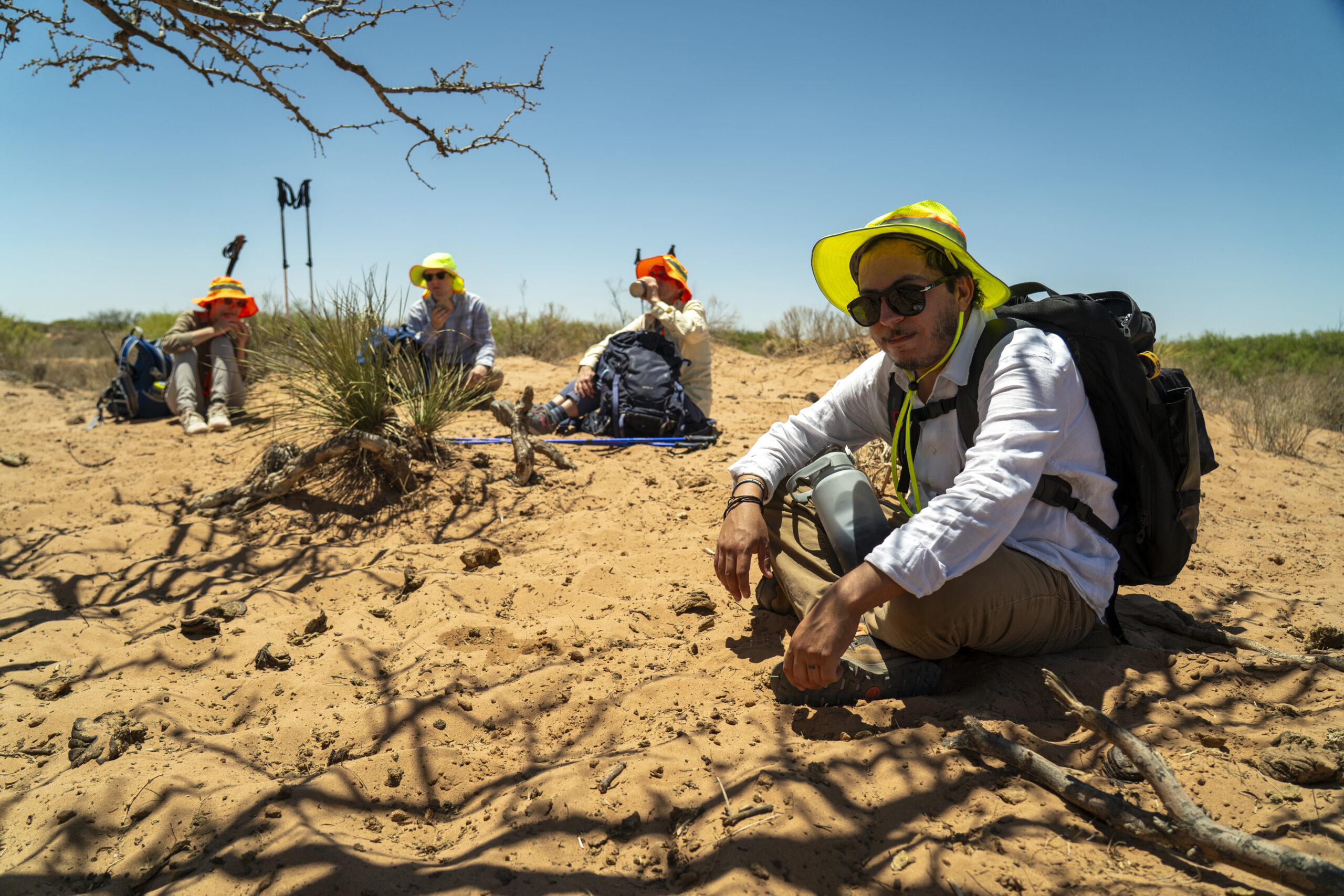
But migrants sometimes don’t have the luxury of taking breaks. Sometimes they run or hide from Border Patrol. And some do it during the summer.
At points, we were deep in the desert and we could not see any signs of civilization, which made us realize that walking in the wrong direction could mean death for many migrants.
“Many people have gotten lost out here. It's really easy to get disoriented,” Holeman said.
ABC-7 spoke with Emily Miller, one of the volunteers who has participated in several searches. She has seen what the desert can do to people.
"The first time I found human remains, it was probably a young woman,” Miller said. "We found the bones and there were female clothes nearby. It's shocking. It's disturbing that somebody, for want of safety, has been lost to their family and has now lost their life."
She said she’s an immigration lawyer in El Paso. She said migrants have been crossing through more dangerous areas of the border’s desert.
"What the U.S. has done and what Texas has done with militarization of the border, has forced people into further and remote areas,” Miller said.
ABC-7 reached out to Border Patrol about that accusation. A spokesperson said in a statement:
"Our message for anyone who is thinking of entering the United States unlawfully along the southern border is simple: don’t do it," Transnational criminal organizations continue to recklessly endanger the lives of individuals they smuggle for their own financial gain with no regard for human life."
Aside from backpacks, tne desert near the border in this area is littered with shoelaces and belts. Sometimes we saw several in the same area. Holeman said they belonged to migrants.
“This is an apprehension site where Border Patrol takes the shoelaces and the belts off of people, and then they just throw it away,” Holeman said as he pointed at the items on the ground. “If we looked around, we might find their cell phone or passport. We're finding a lot of that. And, Border Patrol is doing this. Border Patrol is littering our desert.”
Border Patrol confirmed to ABC-7 that agents do ask migrants to remove their belts and shoe laces when they’re arrested because they can be used as weapons.
A Border Patrol spokesman said those items are left behind in the desert, but he said important documents like passports are placed in a bag and returned to the migrant later.
We stopped the search when we heard what sounded like gunshots. The same desert area is used as a shooting range.
The search lasted about 5 hours. We didn’t find any human remains. It was hard and exhausting, but for the Battalion, it’s always worth searching.
"They have families. They deserve some peace and closure. And there's an opportunity for that,” Holeman said.
Holeman’s girlfriend, Abbey Carpenter, is also a Battalion leader.
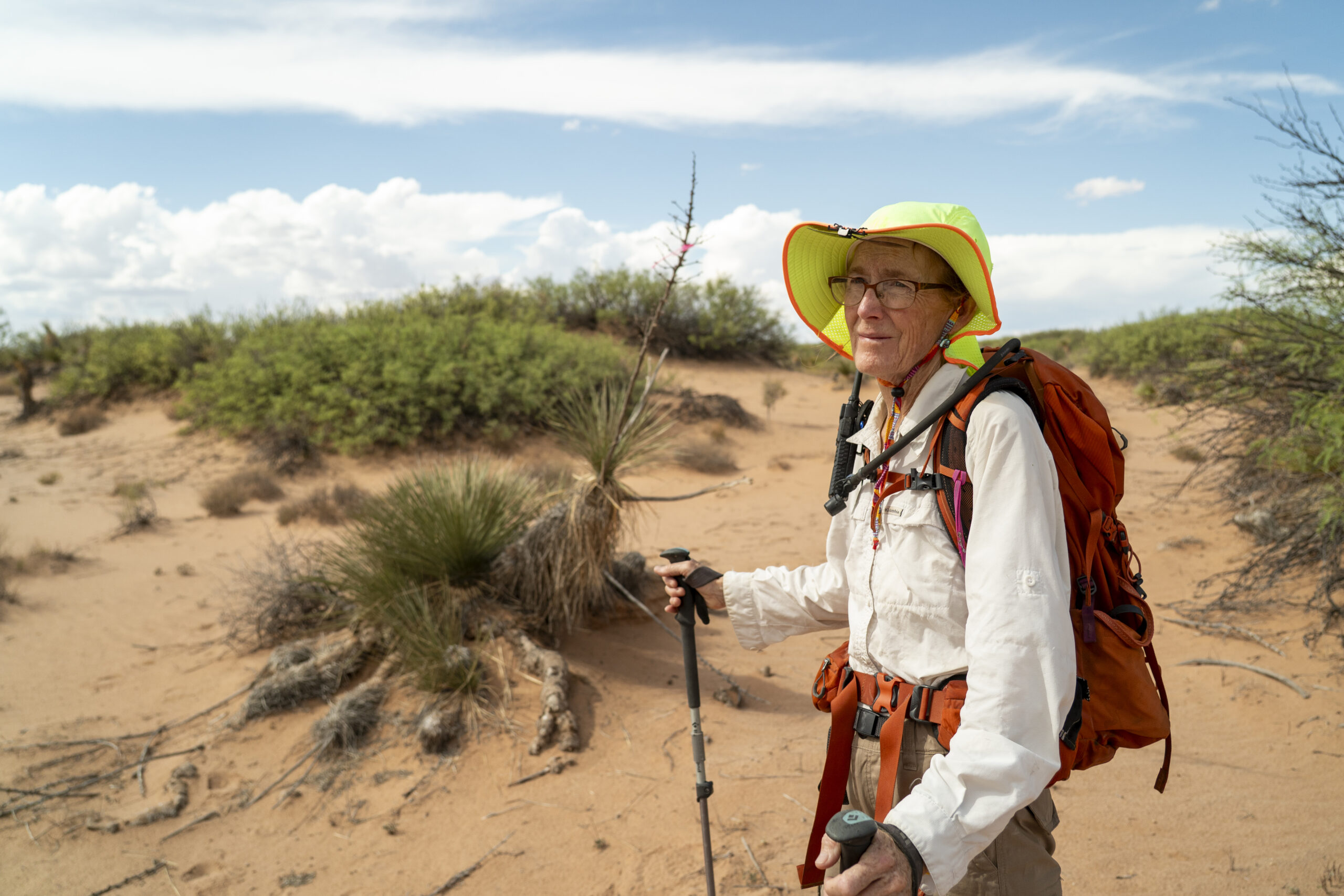
"Even though it is a little stressful, I think this is what I want to be doing. I'm capable of it,” Carpenter said. "I know I've done this enough times, I can look down and I can think, oh, femur, I shouldn't know that's a femur. I shouldn't. That's not a normal thing.”
The couple lives in Silver City, New Mexico, and Ajo, Arizona.
A growing graveyard
Holeman, Carpenter and the organization’s volunteers started doing searches in the El Paso Sector in late 2023.
As of April of 2024, the Battalion said they've found 24 human remain sites in Doña Ana County, mostly in Santa Teresa. The desert near the border there has become a growing graveyard.
The interactive map below was made by the El Paso Sector Migrant Death Database project. Each red dot represents a dead migrant.
The website states the map has statistics from government organizations and law enforcement.
The map shows migrants who have died from various causes, but you can customize it to show people who have died from an unknown cause or environmental exposure — that's any death caused by being outside, like dehydration or heat stroke.
With those parameters, the highest number of deaths happened in 2022, 2023 and 2024. The map shows more than 250 migrant deaths reported in those 3 years alone.
Holeman estimates there are hundreds of dead migrants who haven't been found.
"Where in the world can you go, and go for a hike, and find bodies, find human remains?" Holeman said.
Accusations of bones being left behind
For Battalion Search and Rescue, finding migrant's human remains is just one challenge.
The organization has had a difficult time working with authorities.
Holeman said the Battalion has started returning to sites they've reported before and they've found some remains left behind.
"They leave significant remains behind. Sensitive personal items, clothing that could help identify the individual," Holeman said.
Going back to previously reported sites is a relatively new practice for the organization.
"In the last few months, we've audited 10 sites in New Mexico. The majority here in the Santa Teresa, Sunland Park area," "Holeman said. "Eight of those 10 sites had skeletal remains in the immediate area, or very nearby. 80%. That's a that's a that's a tough statistic. I don't think that would be the case if they were tourists, if they were American citizens."
Anytime the group finds human remains in southern New Mexico, they call the Doña Ana County Sheriff's Office.
The Battalion takes photos of the site and writes a report when they find human remains. The report includes coordinates and a description of the site. They also list the bones they think they found and other nearby items that may help identify them, like clothes.
Holeman and Carpenter said they send the photos and reports to authorities.
All human remains found in the desert are treated as homicide investigations, according to Doña Ana County Sheriff Kim Stewart. She said the investigation continues until the cause of death is found to be other than homicide.
Deputies are supposed to first go to the sites and report it to the New Mexico Office of the Medical Investigator (OMI), which recovers the remains. But Holeman said reporting a site once sometimes is not enough.
"We had to call repeatedly to have the office of medical investigator, field agents and the sheriff's department come to recover them," Holeman said.
According to Holeman, sometimes they don't even try to find the remains.
"When the OMI and the sheriff's department don't go and don't respond to these sites, we don't understand," Holeman said.
He also mentioned how one time they couldn't find the remains.
"We reported the site. They came out. They said they couldn't find it and they canceled the search, which was kind of heartbreaking for us., Holeman said.
ABC-7 requested an interview with Sheriff Stewart several times. She declined to talk to us and refused address the group's accusations.
She only responded to a few questions via email.
"These are human deaths and I don't feel that making them a story beyond the obvious tragedy is appropriate," Sheriff Stewart wrote.
She also wrote in an email that she was concerned about the organization's photos of remains.
"Taking photos of bones with your feet in the photo indicates the crime scene is destroyed and that suggests a compromised investigation, which is difficult for us," Stewart said. "Secondly, we have received coordinates in the past, but on some we found no bones as they refuse to stand by to wait for us (which is a law actually in NM)."
Holeman explained that they don't stay at the sites because that would hinder their work. He said they don't know how long it would take for deputies to arrive and they would rather spend that time searching instead of waiting.
He said the way the Sheriff's Office and OMI have been behaving is unacceptable.
"If a human being is found deceased in the mountains, in the desert, in the city, how long should that take? Did they leave them out there for a week? That seems unreasonable when you have a group that's providing accurate information, that's providing accurate photographs with forensic rulers. Wouldn't that assist?" Holeman said.
Returning to a previously found site with human remains
In August of 2024, ABC-7 joined Battalion Search and Rescue again. Holeman and Carpenter took us to a site with human remains that they first found in December of 2023. They said a forensic team went to the site a few days after they reported it. Holeman said they returned to the site in June — 6 months later. He said some bones were left behind.
"We returned to this site in June and we found bones left out. Rib. Vertebrae. In the immediate area, not way off," Holeman said. "We reported that again, that was the second time."
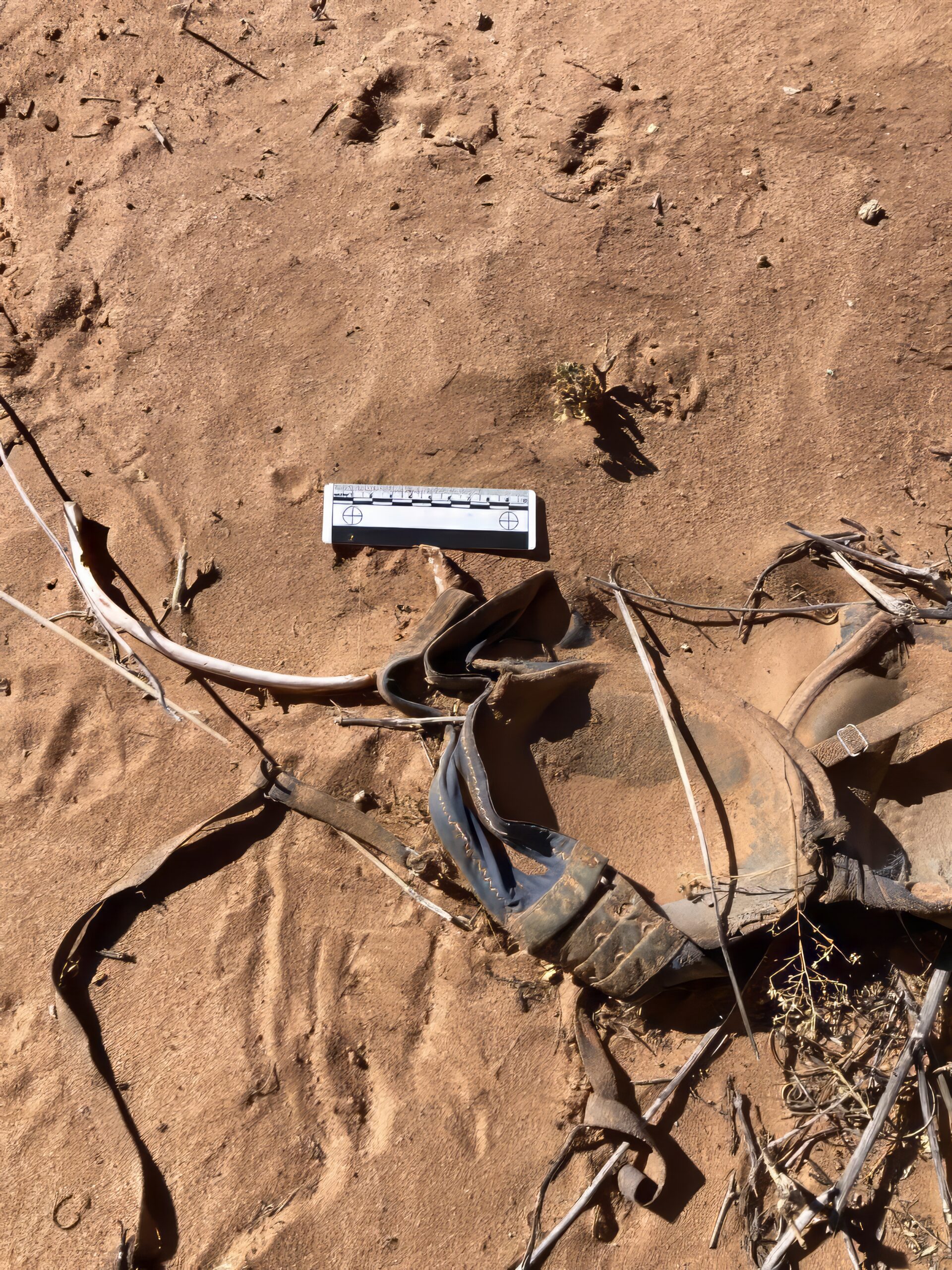
They believe the remains belonged to a woman because of the clothes nearby.
"Here's the rib bone," Holeman said when he pointed to a small bone that looked like a wooden stick.
He pointed out two pink high visibility ribbons tied to a desert plant right above the bone. Holeman said they put one of them in December and the other one in June.
Holeman and Carpenter showed us a long bone and a small bone nearby, a few steps away from each other.
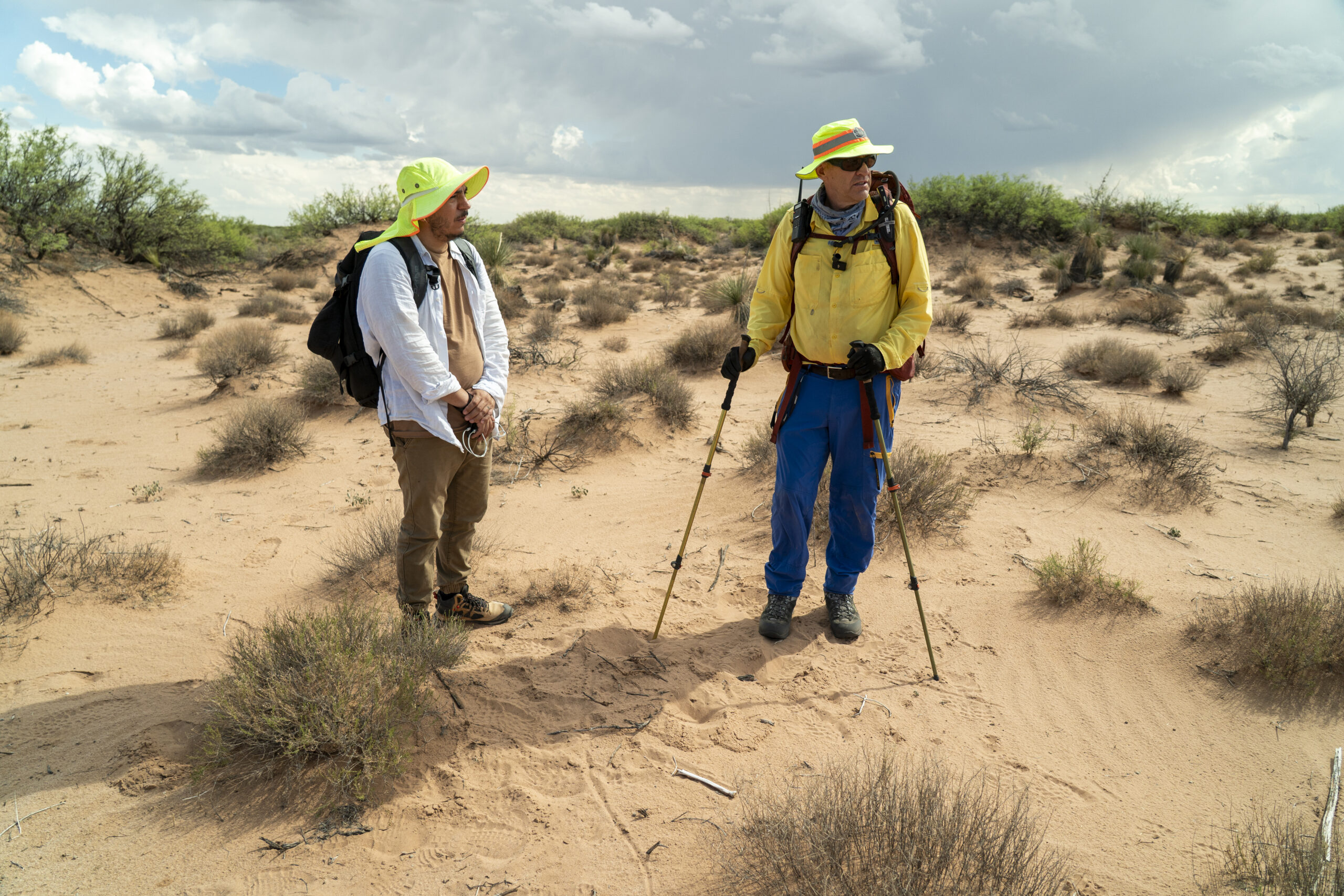
The Battalion said they always put those ribbons to help authorities find the sites.
"It's been sitting there for six months, eight months now," Holeman said. "If it was one or two sites, but eight out of 10 sites to have human remains left behind?"
The bones left behind were small, but Holeman believes it's important for authorities to come back to pick them up.
James Holeman: "Ask the mothers and the fathers and the families. You ask them if it's important," Holemand said. "Ask them if they just want a few of the bones and they're good. Or ask them if they want all of their, their baby, their father, their sisters."
"I have happiness that I found somebody who might have been erased completely," Carpenter said There's sadness. There's a life that's lost. And I don't know what she was running from. Why she's here."
Medical investigator responds to accusations
ABC-7 interviewed the New Mexico Office of the Medical Investigator (OMI) about the organization's accusations.
"It would not surprise me if small bones do get left behind on occasion," Dr. Heather Edgar said. She's a forensic anthropologist at OMI. "I would challenge anybody to go out there and always find every single bone."
When we talked to her in September of 2024, she said her office had only received one full report from the Battalion, even though the group said they've sent several.
Dr. Edgar said forensic investigators try their best to recover all human remains found in the desert, but she said it can be hard.
"Much of the desert is very, very sandy. And as wind or rain moves, things, materials can be buried," Dr. Edgar said. "We also have a great number of scavenging animals out there that scatter remains over wide distances."
But Holeman didn't buy that explanation.
"It's not from shifting sands and animals moving them about. These bones are often directly underneath the high vis tape that we have left behind," Holeman said. "We're a few volunteers that are returning to these sites walking back and forth a few times and finding bones. If we can do that as unpaid, untrained volunteers; the professionals, paid employees, experienced, should be able to thoroughly process these sites and recover everything."
Dr. Edgar said field forensic investigators have been recently training on how to find remains that are highly decomposed and scattered. She said OMI was planning on getting an all-terrain vehicle to help them move across difficult areas of the desert.
Dr. Edgar said OMI used to have three field forensic investigators in Doña Ana County. In September of 2024, she said they had increased that number to 10 because of the increase of reported deaths in southern New Mexico. OMI said the positions were created.
"It's fairly recently that the number of migrants dying in New Mexico has skyrocketed," Dr. Edgar said.
But in April of 2025, a spokesman for OMI told ABC-7 they now have five field forensic investigators in Doña Ana County and share another one with another county.
OMI said it works with consulates from various countries to send remains to their loved ones.
Dr. Edgar said they're grateful of the work the Battalion is doing.
"We appreciate when humanitarian groups can inform us that remains have been found," Dr. Edgar said. "We're really glad to know that so that we can respond to the situation."
Identifying migrants and reuniting them with their loved ones
Border Patrol finds the vast majority of migrant bodies OMI receives, according to Dr. Edgar. OMI said more than 80% have been identified in the past 5 years because Border Patrol has a large migrant fingerprint database.
Dr. Edgar said the majority of migrants OMI has identified in recent years are Mexican.
OMI could not tell ABC-7 how many migrant remains have been reunited with their families, but they provided a lot of data about how they identify them.
OMI recovered migrant/probable migrant cases (2020-2024)
Year totals
| Year | Count |
| 2020 | 9 |
| 2021 | 36 |
| 2022 | 59 |
| 2023 | 119 |
| 2024 | 151 |
| Total | 374 |
Identification rates
In the period between 2020 and 2024, there are a total of 374 recovered migrant/probable migrant cases. Of those 80.2% (300 cases) have been positively identified and 0.8% (3 cases) have a tentative identification.
The following represents the identification rates per year.
| Year | Identified (n) | Identified (%) | Tentative (n) | Tentative (%) | Unidentified (n) | Unidentified (%) |
| 2020 | 9 | 3% | 0 | 0 | 0 | 0 |
| 2021 | 31 | 10.3% | 1 | 33.3% | 4 | 5.6% |
| 2022 | 53 | 17.7% | 0 | 0 | 6 | 8.5% |
| 2023 | 99 | 33% | 1 | 33.3% | 19 | 26.8% |
| 2024 | 108 | 36% | 1 | 33.3% | 42 | 59.2% |
| Total | 300 | 3 | 71 |
| Year | Yearly Positive ID rate | Yearly Tentative ID rate | Yearly Unidentified rate |
| 2020 | 100% | 0 | 0 |
| 2021 | 86.1% | 2.8% | 11.1% |
| 2022 | 89.8% | 0 | 10.2% |
| 2023 | 83.2% | 0.8% | 16% |
| 2024 | 71.5% | 0.7% | 27.8% |
ID method for all identified cases (2020-2024)
| ID Method | Total (n) | Total (%) |
| Circumstantial Evidence | 2 | 0.7% |
| Dental | 11 | 3.7% |
| DNA | 13 | 4.3% |
| Driver's License | 11 | 3.7% |
| Fingerprints | 194 | 64.7% |
| Other- Voter ID Card | 1 | 0.3% |
| Photo | 39 | 13% |
| Visual | 29 | 9.7% |
| Grand Total | 300 |
ID method for positively identified individuals by year
| ID Method | 2020 | 2021 | 2022 | 2023 | 2024 | Total |
| Circumstantial Evidence | 0 | 0 | 2 | 0 | 0 | 2 |
| Dental | 1 | 1 | 3 | 4 | 2 | 11 |
| DNA | 0 | 1 | 5 | 2 | 5 | 13 |
| Driver's License | 0 | 1 | 0 | 7 | 3 | 11 |
| Fingerprints | 4 | 14 | 32 | 65 | 79 | 194 |
| Other- Voter ID Card | 0 | 0 | 0 | 0 | 1 | 1 |
| Photo | 2 | 9 | 7 | 12 | 9 | 39 |
| Visual | 2 | 5 | 4 | 9 | 9 | 29 |
| Total | 9 | 31 | 53 | 99 | 108 | 300 |
Women finding dead women
Battalion Search and Rescue showed ABC-7 a data table with statistics from the El Paso Sector Migrant Death Database. It shows more women are dying than men in the El Paso sector compared to other border regions. It directly compares it to Arizona:

According to the data, in 2023 women made up more than 50% of the recovered human remains in the El Paso Sector. In Arizona, it was 22% that same year. Across the entire border, it was 15%.
"This is more female deaths than anywhere along the entire border right here where we're at," Holeman said. "What's happening? Over 50%. That's an insane number."
Holeman said the Battalion's volunteers are predominantly women.
"They're being led by women, like Abby, and they're finding women, deceased women," Holeman said.
Unexpected discoveries in the desert
During ABC-7's second tour with Battalion Search and Rescue in August of 2024, we found three separate sites the group hadn't found before.
James Holeman: "We hadn't seen this. So as we're walking, we're looking," Holeman said as he pointed to a bone on the sand.
That was the first one the group found as we were walking to the previously found site with bones of that woman they first reported in December of 2023.
James Holeman: "We're not experts, you know. We're not forensic anthropologist, but I'm pretty sure this is, humerus bone. It's an upper arm bone," Holeman said. "I didn't expect to find this today."
"What do you think?" Holeman asked Carpenter, who began to analyze the bone's structure.o
Based on experience, they were sure it wasn't an animal bone. They said they rely on the Internet and experts to confirm.
"We use Reddit. You know, and other, maybe forensic anthropologist that are a little bit more sympathetic and cooperative," Holeman said.
After they showed us the site of that woman they first found in December of 2024, they found another bone they hadn't seen before.
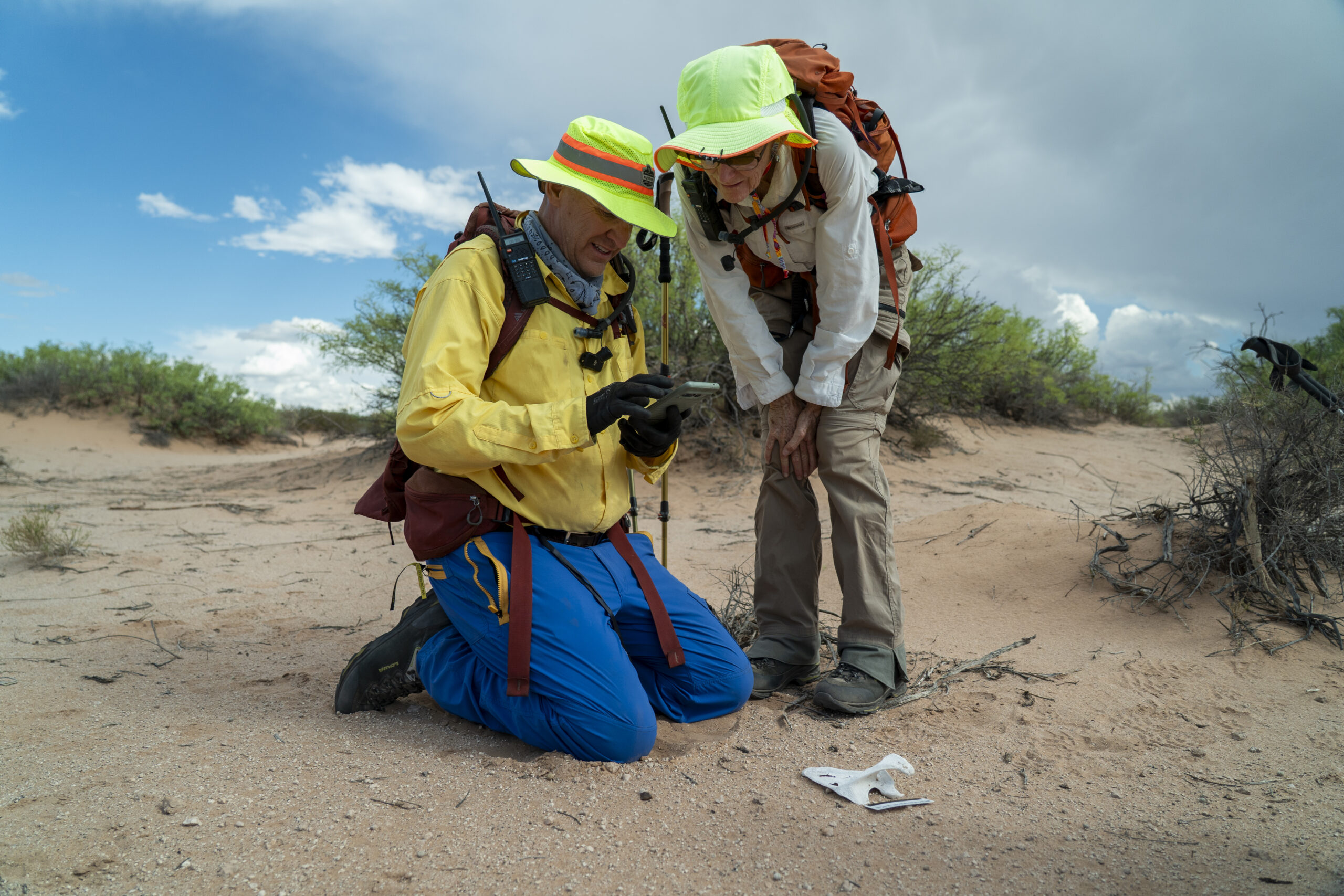
"Okay, more investigating, more online research," Holeman said as he and Carpenter began to work on a new report.
"This is a thin part of the bone. The pelvis or the scapula? Maybe a scapula," Holeman said as he looked at the bone.
We kept walking and a few moments later, ABC-7's contributor Luis Chaparro found a human skull. We were just a few steps away from the Battalion's pickup truck that brought us to this area of the desert.
The human skull was surrounded with scattered bones that probably belonged to the same person.
"Here's one right there," Carpenter said when she found a pair of bones nearby. "This is so sad."
"We'll do our best to report this, ensure that this person, this individual, receives dignity, hopefully is identified and gets to go home," Holeman said.
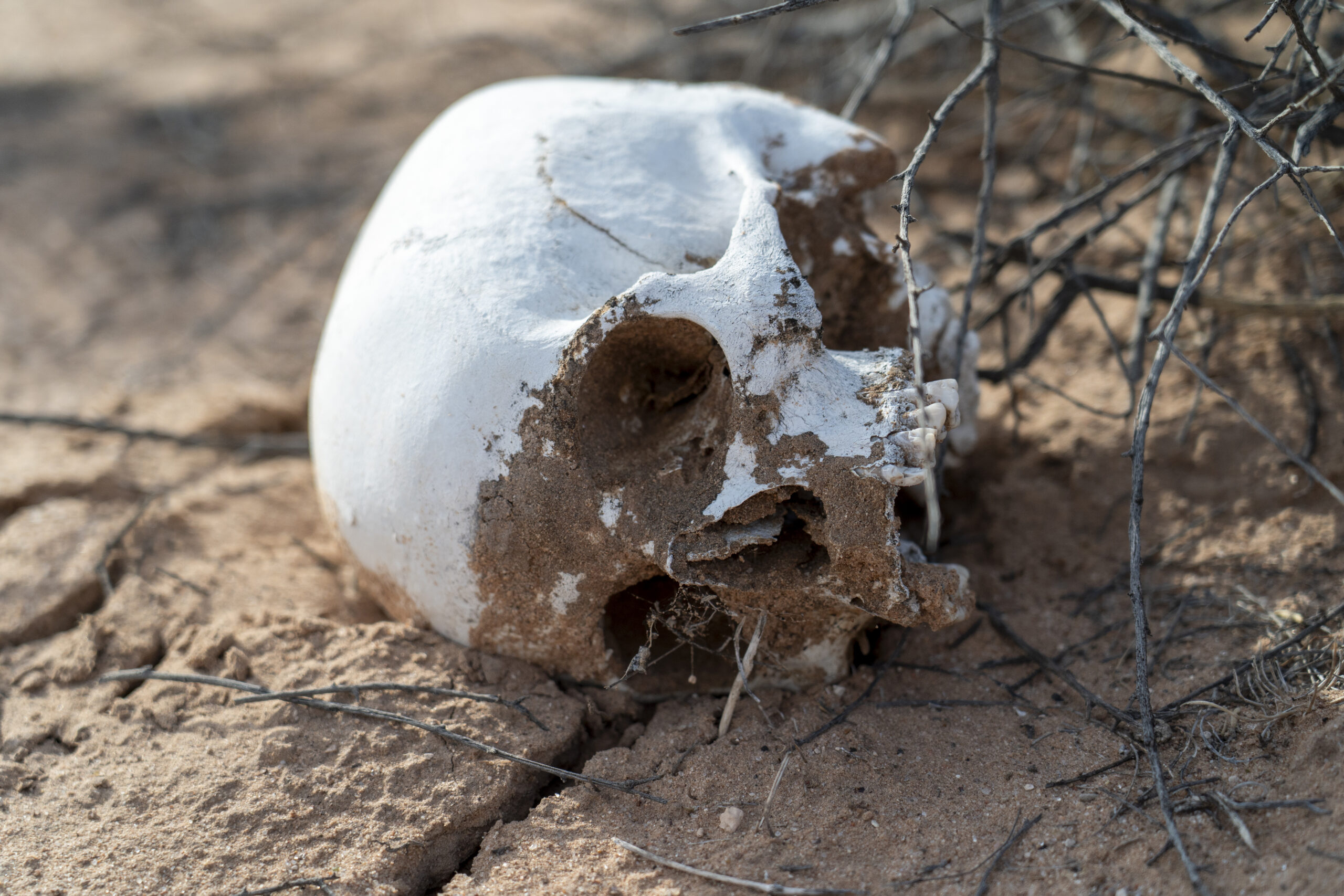
OMI told ABC-7 they try to send a forensic team soon after learning remains have been found.
"It would be a rare case for us not to send somebody that day," Dr. Edgar said.
The Battalion said they reported the site with the human skull after we found it in August of 2024. The group said they have visited the site several times since then. Holeman said all the remains were still there, as of the time this article was published.
ABC-7 asked them OMI why the remains hadn't been recovered. Dr. Edgar could not explain why.

Looking ahead
A lot has changed since ABC-7 last went out with Battalion Search and Rescue.
Under the Trump Administration, the number of migrant crossings along the border has decreased to the lowest levels we've seen in recent history.
Border Patrol said in late March of 2025 that agents in El Paso Sector are currently seen a significant decrease in migrant apprehensions with almost 70% difference compared to the same timeframe last year, in addition to a lower number in deaths and rescues.
The Battalion, Border Patrol and OMI what they expect for the summer of 2025. They all said they don't know and would only be speculating.
Holeman said they plan to continue searching because they estimate hundreds of undiscovered human remains are out there.
"This is a story that needs to be told," Holeman said. "People right here in El Paso, Phoenix, Tucson, they have no idea that the amount of death their state is. Land of open graves."
If you're interested in volunteering or donating money to help the Battalion, click here to learn more on their website.
Holeman said he'd love to see new search groups form.
"I say that we search for the lost but not forgotten," Holeman said. "It's difficult, but I think it would be more difficult to turn our backs."
Luis Chaparro contributed to this report.
